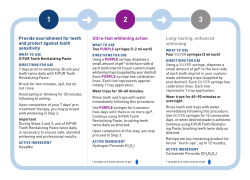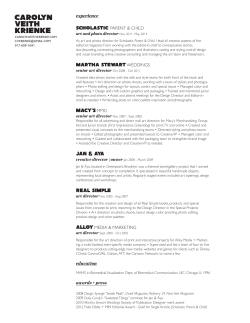
R.D.T.
The tool used in the Forest Applications and Game of Logging training is the Husqvarna depth gauge tool (505 69-8101), photo (8). This tool may be purchased at your local HF&G dealer. Never attempt to set depth gauges by sight. Maximum setting should be no more than .035 of an inch. Removing to much from the depth gauge may cause loss of power in the cut and increases the risk of operator injury from reactive forces. Improper depth gauge settings will make bore cutting virtually impossible. One way to achieve proper results with all saw chain filing is to hold the saw in a position during filing to better see the tooth. Underside cutting surfaces and tooth angles are important and you can master them quicker if you can see them while filing. The drawing on the cover of the brochure illustrates the method used in our training. Setting or holding the saw upright against a log or limb, enables the operator to see the tooth surface. This position allows for better control of the file during the sharpening process, use of your most coordinated arm for sharpening both sides of the chain. Motion of the file from the inside to the outside of the tooth makes it easier to sharpen all the tooth surface without coming in contact with the tie straps and rivets of the saw chain chassis. Field sharpening can be as accurate as a machine grinding if these techniques are practiced. Saw Chain Tooth Parts: 1. Depth Gauge 2. Point 3. Side Angle 90 degrees 4. Top Angle 20-35 degrees 5. Chisel Angle 45 degrees R.D.T. Reduced Down Time Soren Eriksson and Tim Ard have been training professional chain saw operators for over a decade with the Game of Logging competition based training program. This program combines the over 35 year logger training experience of Mr. Eriksson and over 25 year chain saw technical experience of Mr. Ard. Working together their ability to transfer this vast knowledge has revolutionized chain saw safety and productivity. Contact Forest Applications to discuss a training program for your chain saw operation needs. Firewood-Tree Care-Utility-Logging-Tree Farm For More Information: Forest Applications Training Inc., P.O. Box 1048, Hiram, GA 30141-1048 PH. 770-943-4745 or FAX 770-439-6620. http://www.forestapps.com E-mail info@forestapps.com Tips for a Sharp & Productive Chain Saw S quare-ground chisel chain has proven to be a very fast cutting and productive chain for the latest generation high speed professional chain saws. Square-ground chain is not new, it has actually been around for many years in the western United States. Professional loggers have found this saw chain superior in performance to conventional round-ground in a variety of applications. ect Dir File 45 Degrees 45 Degrees Hold file 45 Degrees Position saw so you can see Side at 85-90 Degrees We recommend the use of the flat chisel bit file. This file is available through your Husqvarna Forest & Garden dealer (1-800-HUSKY-62) or Bailey's Supply (1-800-322-4539). After the tooth is sharpened several times, you may wish to remove the metal filing residue in the gullet area. Notice in photo group (5) this may be done with a round file before finishing the edge with the Chisel-Bit file. As the tooth is filed back, the depth gauge on the tooth must be set. This should be done with a depth gauge tool. 3 Note how the file is positioned In Forest Applications training, Chisel-Bit filing is used because of its fast cutting, smooth boring, and low vibration tendencies. Chisel-Bit filed saw chain seems to stay sharp longer in most wood types. Please be aware this filing technique is designed for professional chain saw operators! Notice the correct file angles in the example photos (1-3). Three very important points should be emphasized. Side Plate Angle should be 85-90 degrees as in photo (4). The Top Plate Angle should be approximately 20 degrees as in photo (7). The Top Angle on file should cut a channel directly to the point of the tooth as shown in photo (6). 2 ion 1 Ridge formed 4 5 Ridge removed 7 Channel/Line to the point 6 15-20 Degree Top angle 8 Depth Gauge Guide
© Copyright 2025





















